Anchor Guardian: Hold still
The anchor is undoubtedly the most iconic symbol of seafaring and maritime culture. What many associate with safety and hope, however, evokes rather unpleasant thoughts for many superyacht captains. The principle of anchoring has remained largely unchanged for centuries, and keeping a superyacht safe and still in adverse conditions, with the help of a huge lump of metal and a lot of fingertip feeling, is correspondingly complex. How we manage this complexity is set to change for the better, if things go according to Swiss Ocean Tech.
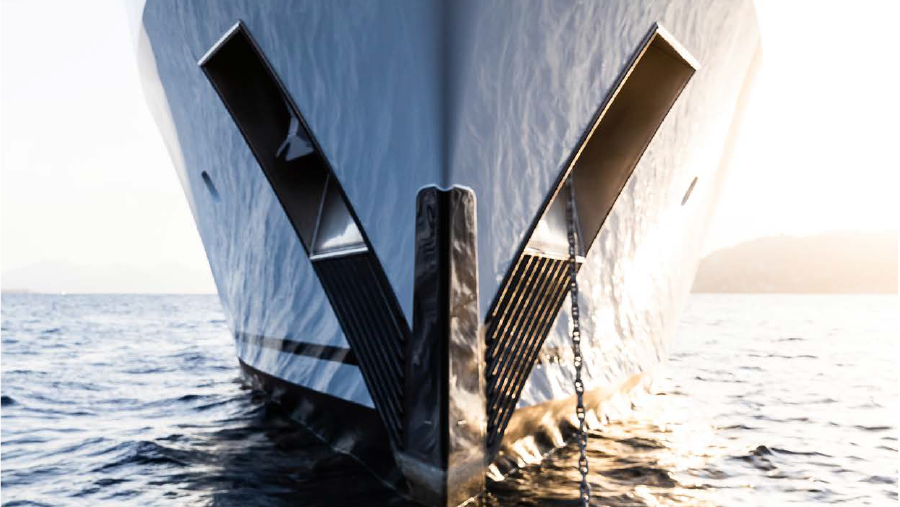
A nearly 40-metre-long motor yacht lies helpless on the Mirabella Rocks off Cap Ferrat. Unable to manoeuvre, the colossus construction of steel and aluminium leans 25 degrees to starboard. The waves whip against the hull and continually press the ship harder onto the rocks. The pictures of this spectacular accident spread around the world. An elaborate and costly salvage operation is necessary to bring the yacht to Villefranche, where the hull, which has been punctured many times, is provisionally welded shut so that the vessel can begin its journey towards the actual repair work. As it turns out, the cause of the accident becomes clear. The yacht's anchor broke loose in the wind, causing the yacht to drift uncontrollably.
Anchoring does not just pose risks to people and the ship itself, however. Around the Balearic Islands and in the Caribbean, yachts are repeatedly causing significant damage to sensitive habitats such as seagrass beds or coral reefs with careless anchoring manoeuvres. Menorca, Belize, Kailua Bay or Grand Cayman are popular yachting destinations, but at the same time, have extremely fragile ecosystems. The square metres on the seabed that are destroyed or damaged by anchors and chains in a matter of minutes often take decades or longer to fully recover. A variety of local initiatives exist today to raise awareness of the problem. A favourite tool of the authorities, however, remains the imposition of heavy fines on the owners of vessels caught anchoring without permission.
The question of a better way to anchor also plagued Thomas Frizlen, Managing Director and Founder of Swiss Ocean Tech. "I've often wondered if I'm the only one who struggles with anchoring," jokes the passionate sailor, who knows just about every cruising ground from the Swedish archipelago to the Maldives." His company is currently preparing several pilot projects that aim to make anchoring more predictable, safer and easier to monitor with the help of state-of-the-art technology. To protect the ship, people and, not least, the environment. The name of the specially developed solution that promises all this is AnchorGuardian.
Frizlen explains: "The focus of our efforts is safe anchoring. For that to succeed, the process has to become simpler. We are giving captains the information and control they need to set the anchor in the best possible way and to monitor it in real time while anchoring. We are taking the principle of anchor watch to the next level and using Big Data to warn the crew of a yacht before the anchor starts to drag. Anyone who has experienced it knows that every minute counts if the worst comes to the worst. Since we collect the data directly at anchor, we are also independent of any movements of the ship itself. False alarms caused by wind, current or swell, are thus excluded. We work with our proprietary movement detection technology and are completely independent of inaccurate GPS data. In addition, we provide the position of the anchor as an AIS signal."
The highlight of the solution is the possibility to integrate AnchorGuardian into the existing setup of anchor and chain without much effort. The anchor module, which contains the necessary sensors, is simply inserted between the anchor and the chain. Three additional modules are used to receive the data on board, automatically charge the batteries integrated in the anchor module, and visualize the information: "We are convinced that with AnchorGuardian we can put an end to the discussion about rules of thumb regarding chain length and other issues. Moreover, our solution not only identifies in real-time every movement of the anchor, it also provides the user with essential information about the condition of the seabed. This way, we not only enable the crew to achieve the best possible hold, but we work to protect sensitive plants and corals."
The ambitious company's goal is to use machine learning to keep expanding AnchorGuardian's efficiency and predictive accuracy over the long term. The composition of the team is correspondingly diverse. From software developers to ultrasound specialists and experts in algorithm-based navigation, Swiss Ocean Tech's crew is at home in a wide range of disciplines. Frizlen certainly does not hide his ambition and conviction: "AnchorGuardian offers breakthrough smart technology to increase safety on board while minimizing the environmental impact of anchoring. Smart technologies like ours are critical components in the digital transformation of the shipping industry. Although widely considered slow to adopt technology, the shipping industry has made significant progress recently. The potential for collecting and analysing "Big Data" is enormous with digitalisation. By using our smart technology, we will generate information about the nature of the seabed and obstacles in the sea, which can then be studied from shore or find its way into nautical charts, for example."
The next few months will show whether the solution proves to be successful. Several yachts have been and are currently being equipped with the necessary modules to collect data for series production of AnchorGuardian and to obtain the mandatory certifications for use in recreational and commercial shipping. Holger Flindt is certain that the solution has great potential: "The topic is as old as seafaring itself. If Swiss Ocean Tech succeeds in delivering on its promise, it would be a milestone and a great signal to the industry that, in addition to incremental improvements, there is definitely room for real innovation. The growing large yacht industry in particular would be the perfect playground for more innovative companies. We will continue to report."
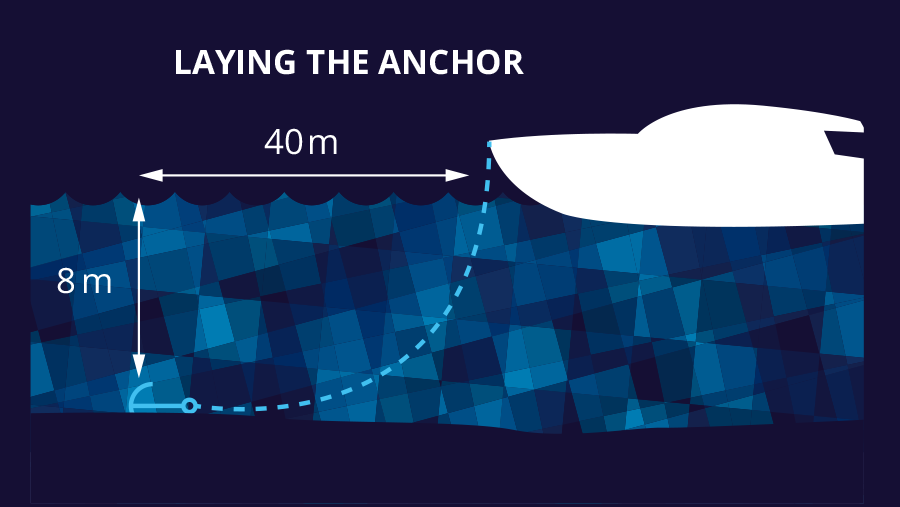
Laying the anchor
• When anchor reaches bottom
• Composition of seabed (e.g. sand, seagrass, rocks, etc)
• Orientation of anchor
• Depth of anchor (8m)
• Distance to anchor (40m)
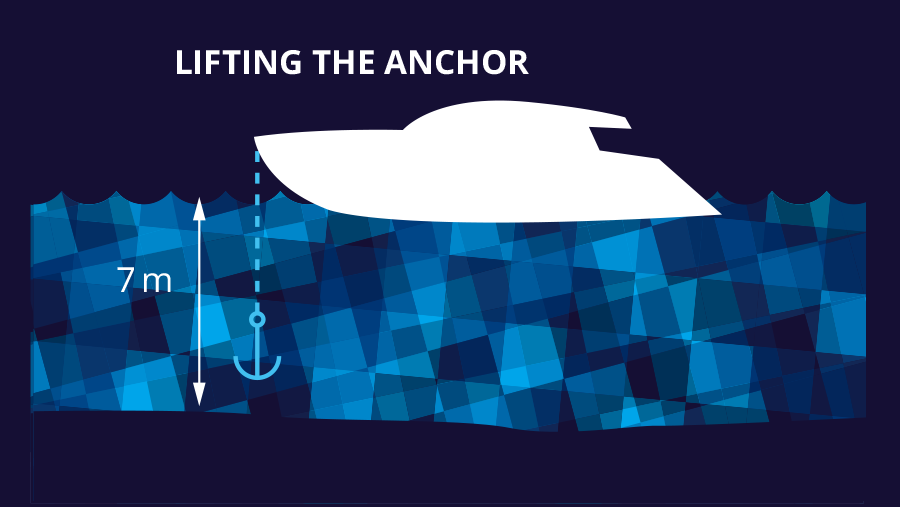
Lifting the anchor
• When anchor is aweigh
• Anchor in sight
• Anchor stowed
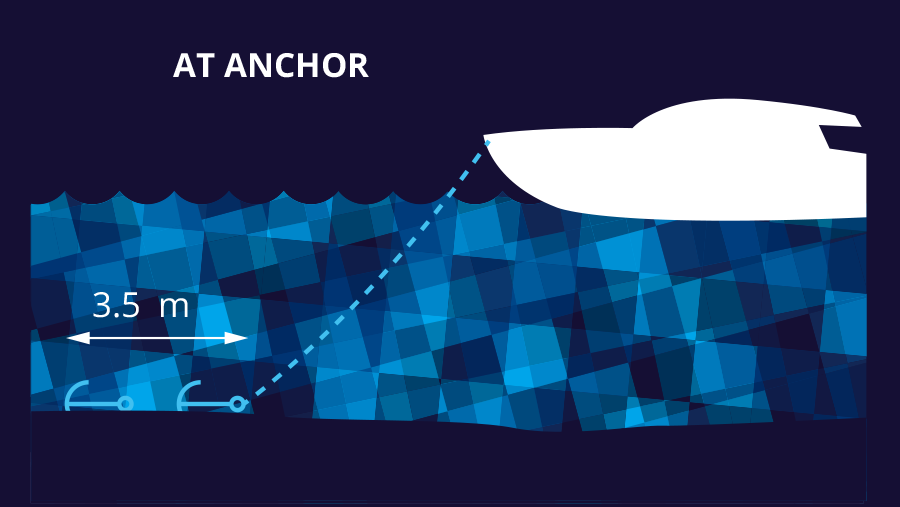
At anchor
• Absolute anchor movement (3.5m)
• Force on anchor at given time
• Anchor chain is lifted off the seabed
• Prediction if dragging is imminent
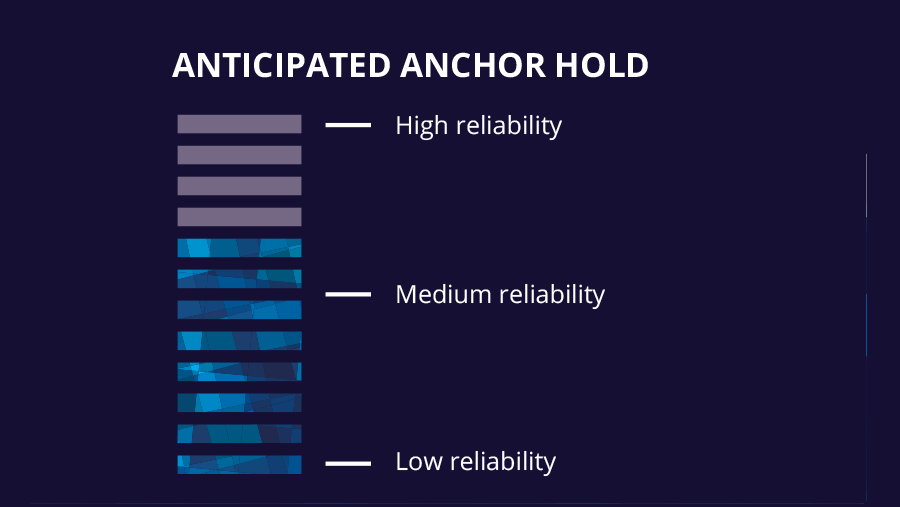
Anticipated anchor hold
• Distance limit to receive an alarm: the user can select and define the distance
• Quality of anchor hold (low to high)
• Alarm value for maximum holding force